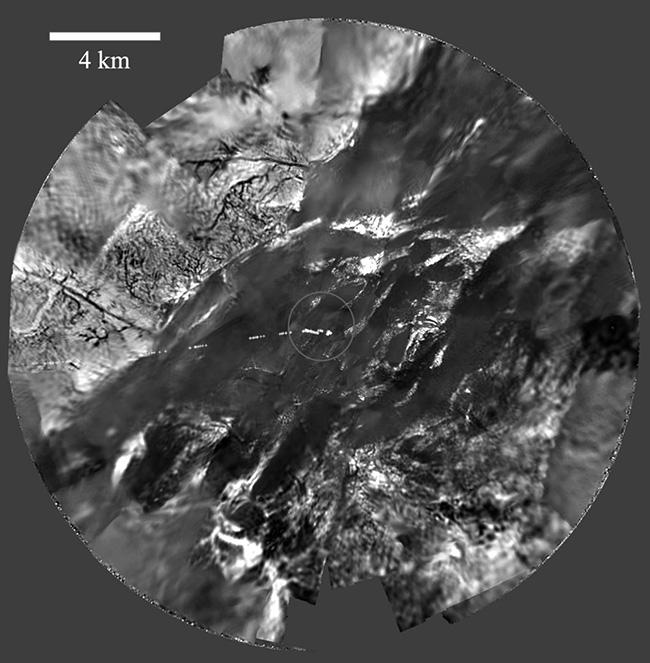ANSTO will participate in a New Zealand Marsden project which will search for chemical clues linked to the origins of life on Titan, Saturn's largest moon. Interest in this small world is growing, especially in the build up to the next mission to investigate the surface - NASA's Dragonfly mission, due for launch in 2028.
Research led by Dr Courtney Ennis of the University of Otago (NZ), will investigate how Titan's icy surface might foster the building blocks of biology-specifically, pathways that lead to the formation of amino acids.

Dr Helen Maynard-Casely a principal instrument scientist at the Australian Centre for Neutron Scattering, expert in small molecules and ices and collaborator of Dr Ennis, is an Associate investigator on the grant along with others from Jet Propulsion Laboratory and University of Western Australia. The team will undertake experiments on compound clathrate hydrates on the High Intensity Diffractometer, Wombat.
These cage-based materials can trap molecules such as methane and ammonia in their structures. Clathrates hydrates are thought to form deep inside Titan under high pressure and later brought to the surface, could be hotspots for chemical reactions.
The research proposes that when exposed to high-energy radiation, these clathrates may produce methylamine-a precursor to glycine-and other biologically relevant compounds.
"To test this, we'll conduct cutting-edge crystallographic studies at X-ray and neutron facilities to understand clathrate structures under Titan-like conditions," explained Dr Maynard Casely.
"It is possible to simulate Titan's chemistry also by irradiating clathrate films with electrons and analysing the resulting products using advanced spectroscopy, something that the Otago team are experts on."
The terrestrial team will aim to provide the Dragonfly mission with valuable and precise diagnostic signatures of the clathrates to help guide the space probe in its search for amino acids on the icy surface of Titan.
The temperature at the surface, which is comprised of liquid hydrocarbons, methane and ammonia, at ‒180 °C.
If methylamine and related compounds within clathrate material are found by Dragonfly, they would provide vital chemical fingerprints.
Finding these signatures on Titan would confirm that amino acid formation is possible beyond Earth.
"Such a development would be an exciting leap forward for astrobiology," said Dr Maynard-Casely.
Other collaborators include Prof Stephen Moggach from the University of Western Australia and Dr Tuan Vu of the Jet Propulsion Laboratory.







